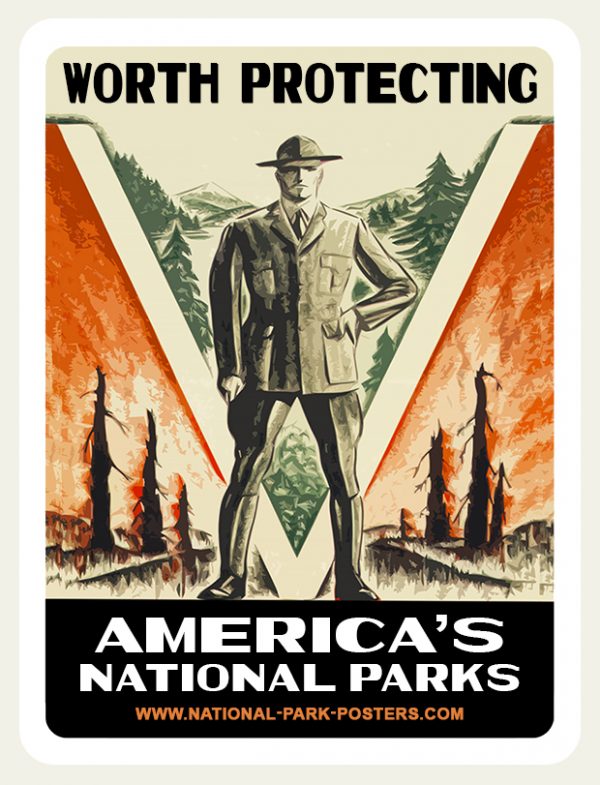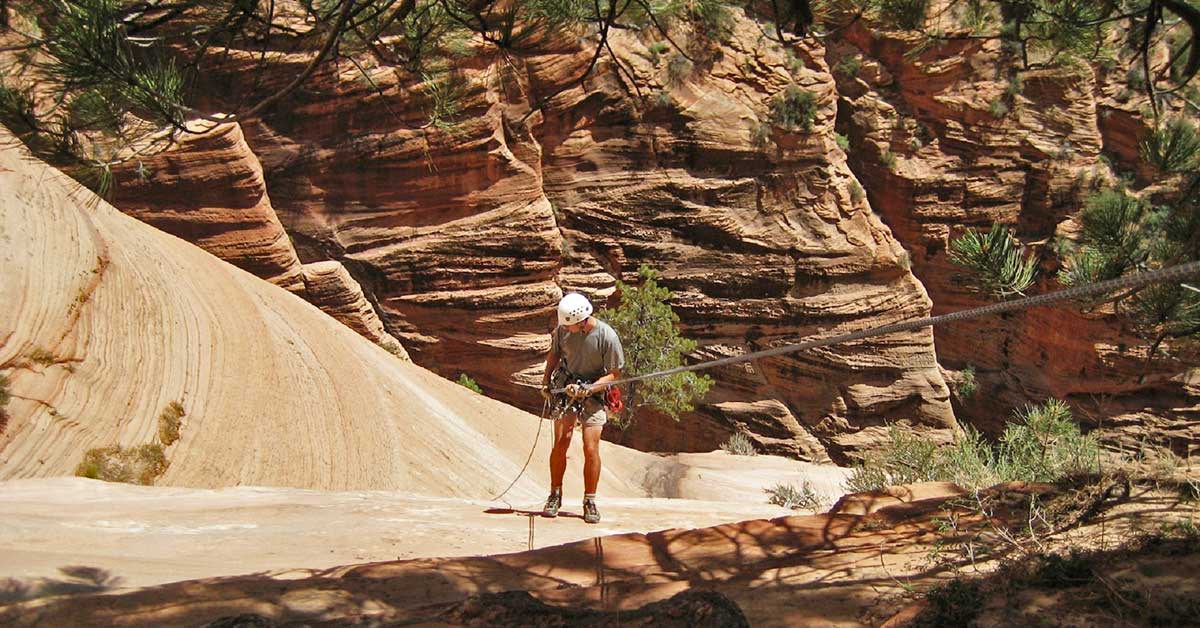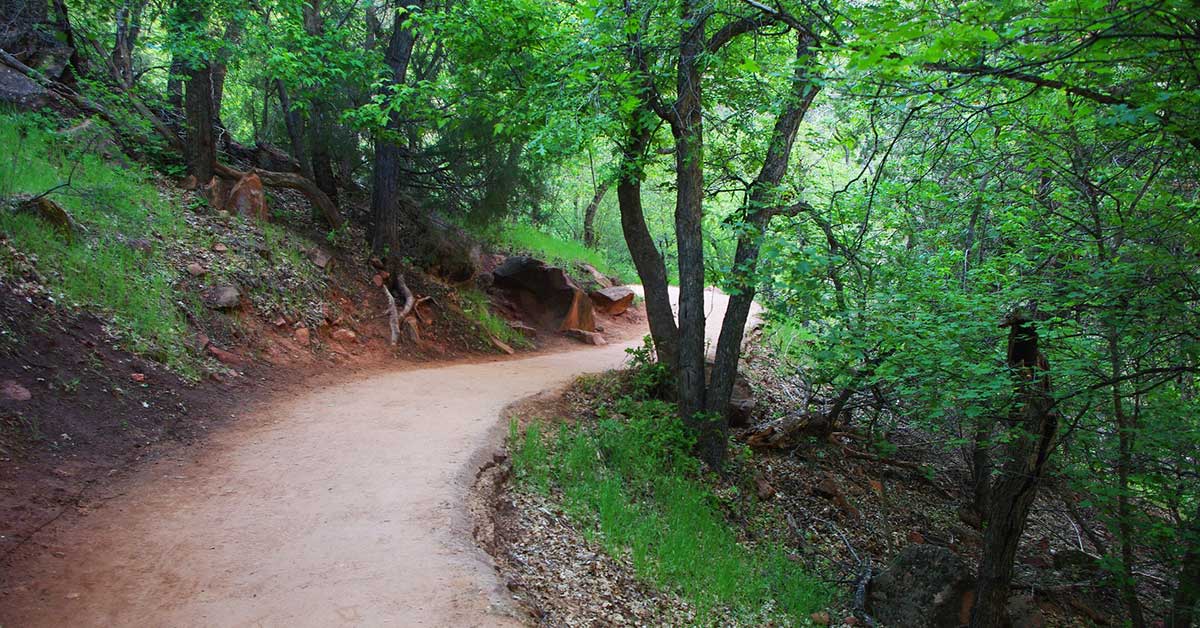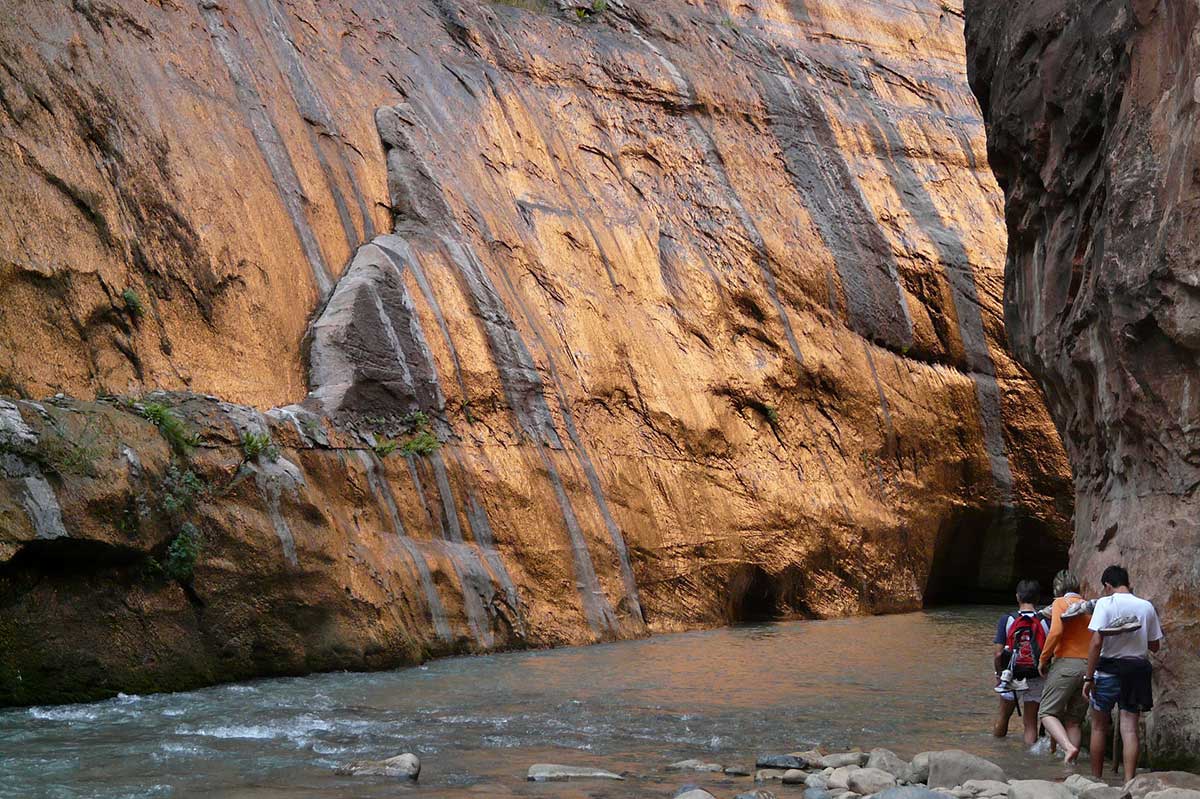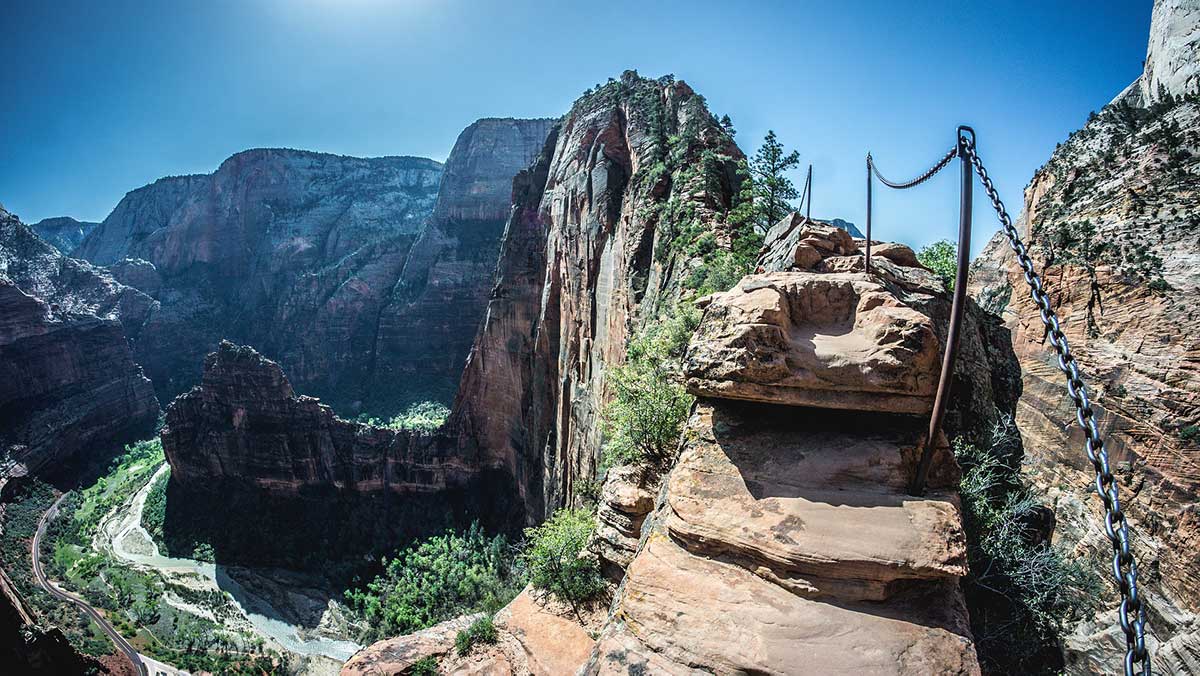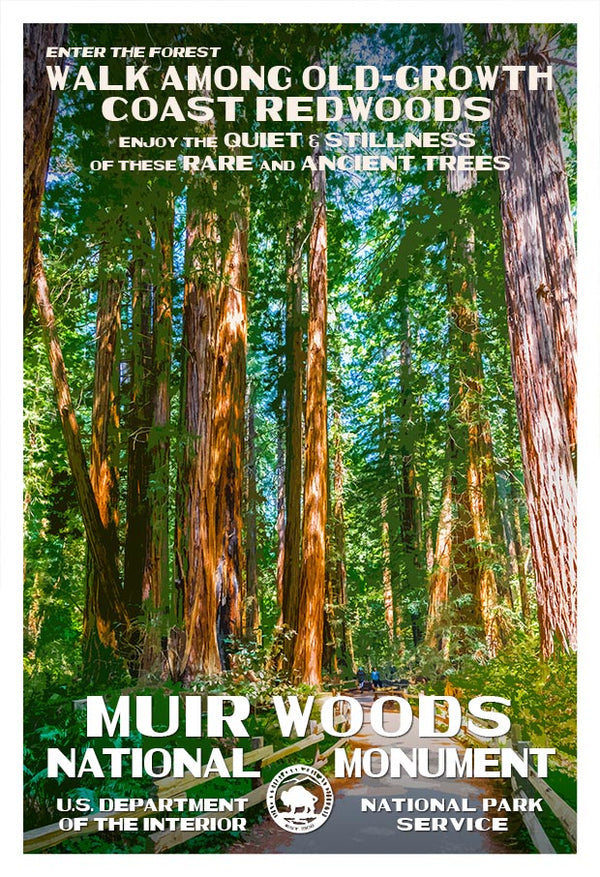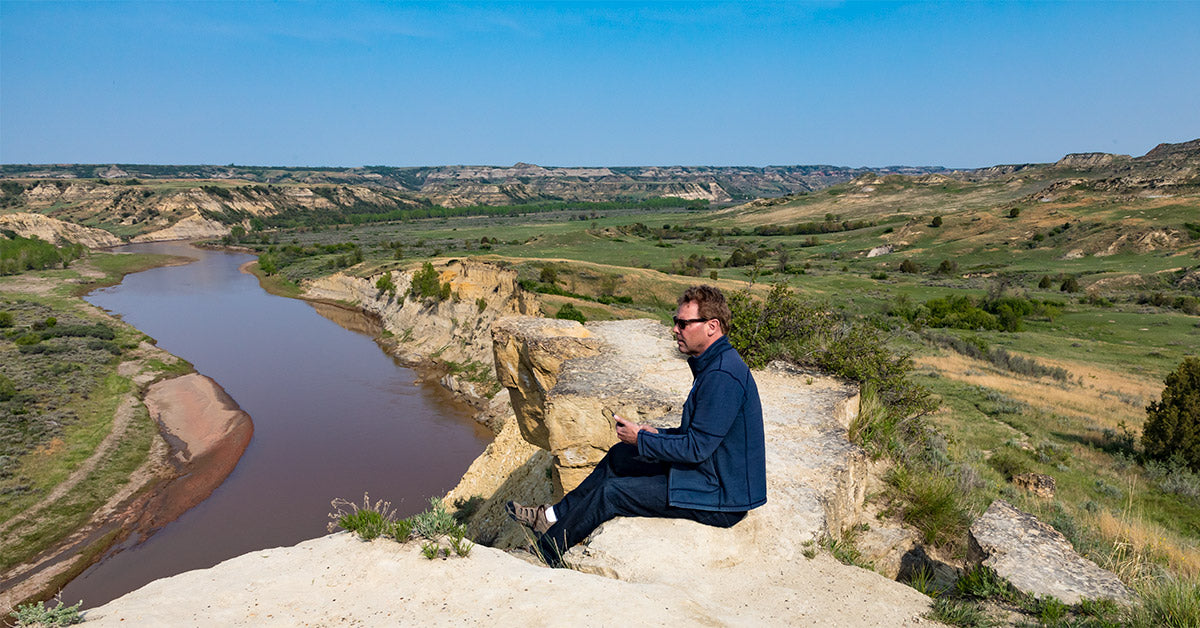A visit to Arches National Park provides an opportunity to discover a landscape of contrasting colors, landforms and textures unlike any other in the world. The park protects the largest proliferation of arches in the world -- more than 2,000 natural stone arches, fins, towers, ribs, gargoyles, hoodoos, and balanced rocks. Landscape Arch, measuring 306 fragile feet, is the second-longest span in the world and it's a sight you will never forget. And, Delicate Arch is one of the most famous geologic features anywhere on earth!
My name is Rob Decker and I'm a photographer and graphic artist with a single great passion for America's national parks! I've been to 51 of our 62 national parks — and Arches National Park is one of my personal favorites! I've been to Arches National Park many times — so I'm ready to help! Whether it's your first visit or your tenth, or if you have one hour or three days, you can always find something to do at Arches. Here are some of the best things to do in Arches National Park!
Park Avenue and Courthouse Towers
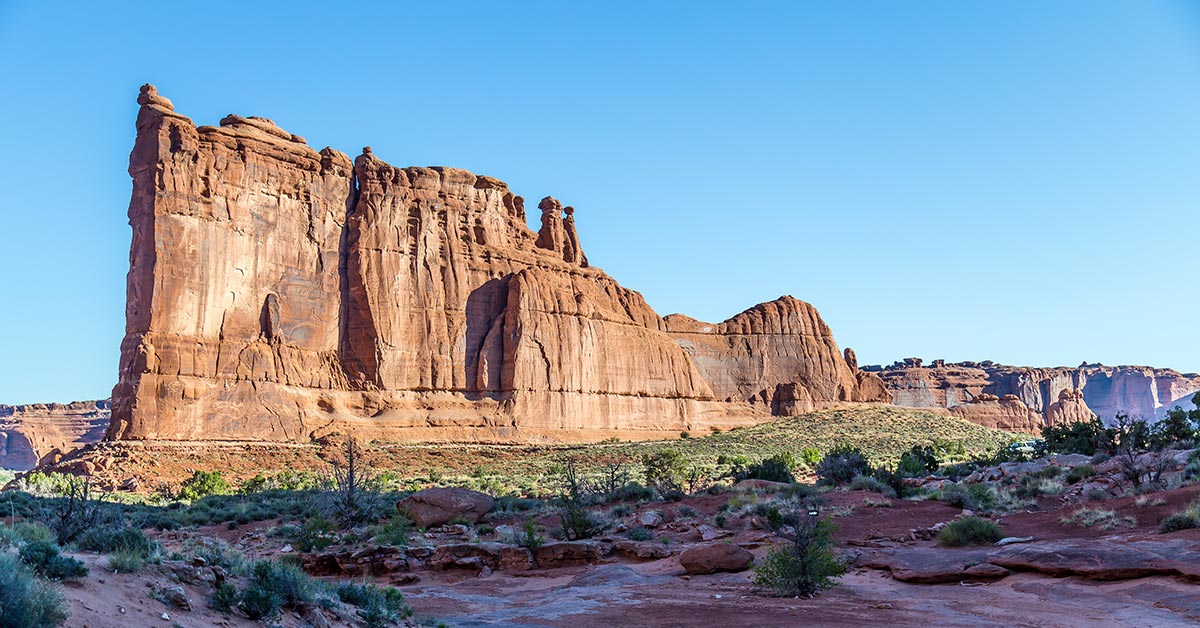
Courthouse Towers, Park Avenue, Photo: Robert B. Decker
After you leave the Arches Visitor Center, you'll drive up steep switchback roads, and the first major area of the park you'll see is Park Avenue and the Courthouse Towers. Walk among these massive monoliths and towering walls and see amazing views of the nearby La Sal Mountains. Beyond the viewpoint, the trail descends steeply into the spectacular canyon and continues one mile to Courthouse Towers.
Delicate Arch

Delicate Arch, Photo: Robert B. Decker
People come from all over the world to visit Arches National Park, and visiting the most delicately chiseled arch in the entire area should put Delicate Arch on the top of your must-see list. The light opening of the arch is 46 feet high and 32 feet wide, making it the largest free-standing arch in the park. Delicate Arch has become a widely recognized symbol of the state of Utah.
Devils Garden
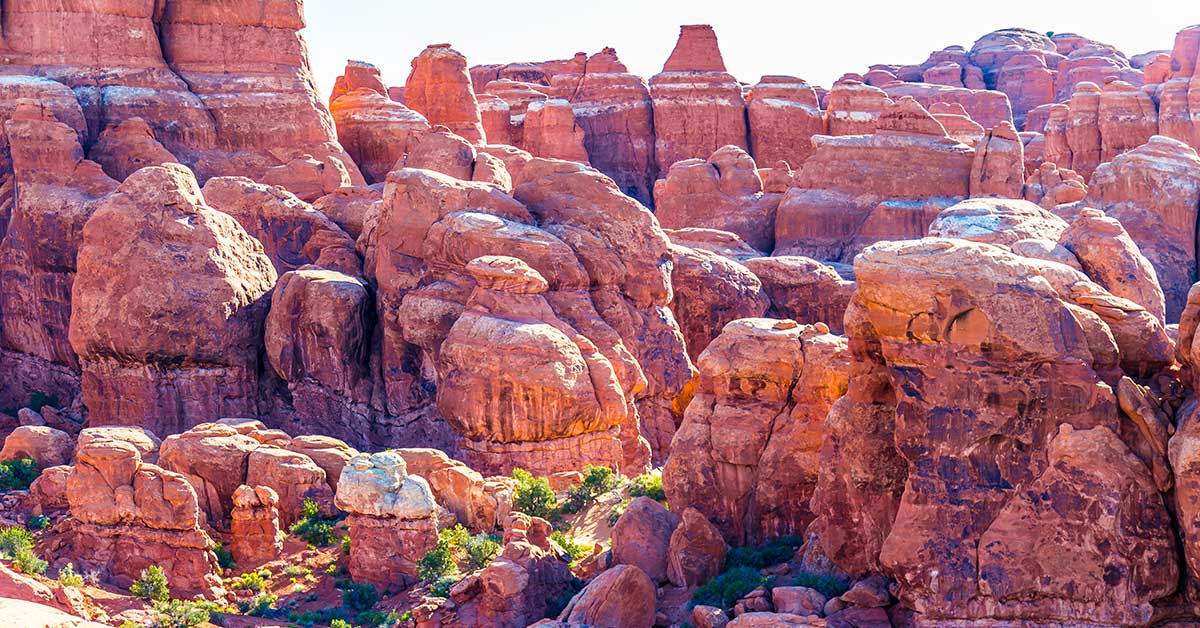
Devils Garden, Photo: Robert B. Decker
Devils Garden offers breathtaking views, camping, backpacking, stargazing, and hiking of all skill levels. Devils Garden is one of the premier locations in the park and here you'll find arches, spires, and a large concentration of narrow rock walls called “fins.” Fins eventually erode and give way to the formation of arches like Landscape Arch, the longest arch in North America with a light opening of 306 feet. This awe-inspiring expanse is only 6 feet (1.8 meters) in diameter at its narrowest point.
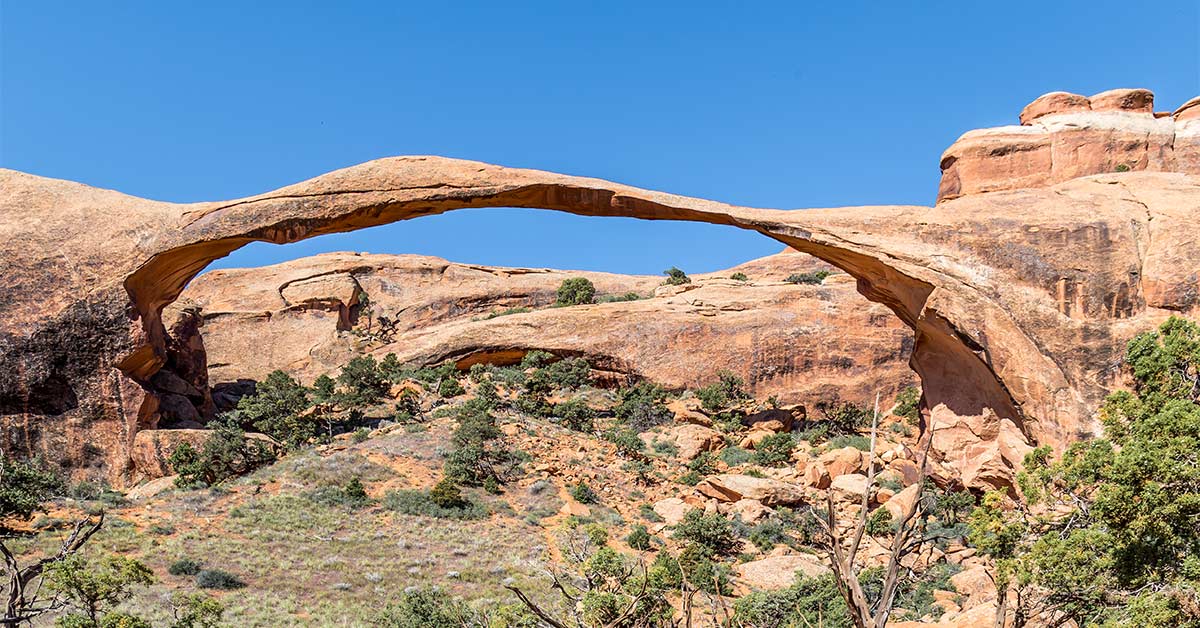
Landscape Arch, Photo: Robert B. Decker
Balanced Rock

Balance Rock, Photo: Robert B. Decker
Balanced Rock, one of the most iconic features in the park, and stands a staggering 128 feet tall. Balanced Rock defies gravity but this won't always be the case. Eventually, the 3,600 ton boulder will come tumbling down as the erosional process continues to shape the landscape.
Windows Section
The Windows Section contains a large concentration of arches and is one of the most scenic locations in the park. North Window, Turret Arch, and Double Arch are just a few of the awe-inspiring expanses you'll find in just over two square miles. Other named features in this area include Garden of Eden, Elephant Butte, and Parade of Elephants.
Exploring the Park by Car
If your time at Arches is limited, the easiest way to see many of the park's outstanding natural features is to drive the 18-mile scenic road. Parking is limited at all destinations, and popular trailheads like Delicate Arch and Devils Garden may fill for hours at a time, especially on weekends and holidays. If you have an hour or two, drive to The Windows Section and see some of the park's largest arches. Add a half hour to stroll beneath either North Window or Double Arch. Or, drive to Delicate Arch Viewpoint and see the world's most famous arch, a mile distant. Stop at Wolfe Ranch on your way back and imagine what it would have been like to homestead this relatively barren area in the late 1800s.
Get Out and Hike
To really experience some of the park's best features, you need to get out and hike! The trip to Delicate Arch is particularly rewarding, and if you can time it at sunset, it will be a memory to cherish forever. Arches contains a variety of hiking trails, many of which are considered easy to moderate. Trails provide access to outstanding viewpoints and arches not visible from the road. In some cases, trails travel under arches, affording quite a unique perspective on the park's namesake features. Sandstone basins called ephemeral pools or potholes are home to a variety of life. Tiny organisms depend on the water in these shallow pools. Also, climbing, scrambling, walking or standing upon, or rappelling off any arch is prohibited in the park.
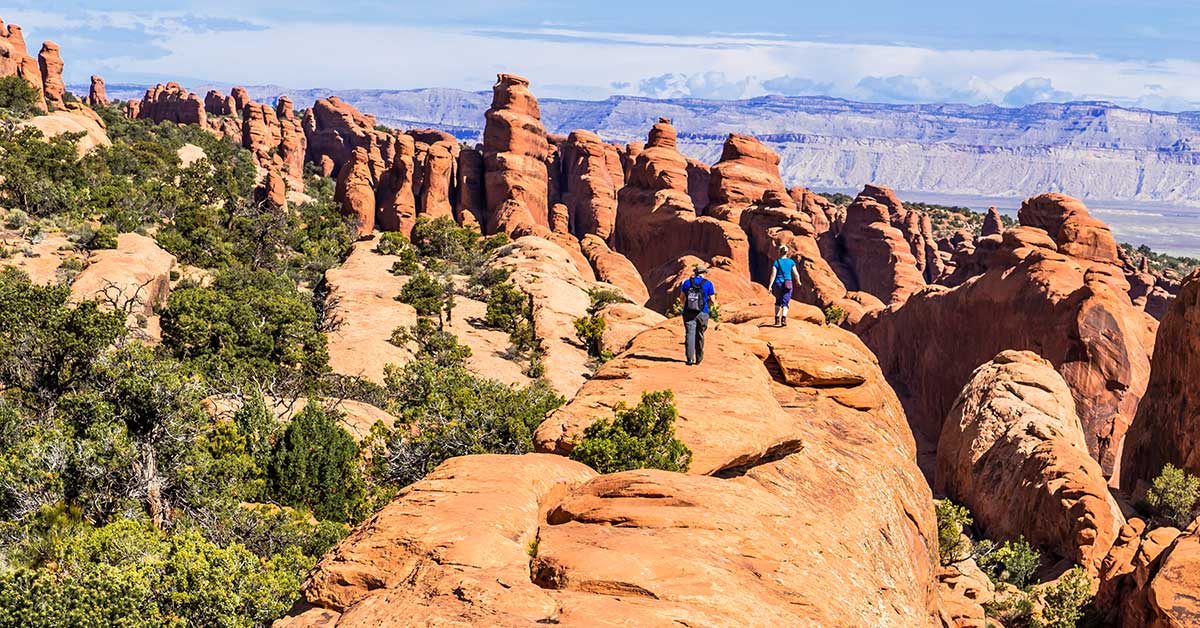
Fin Canyon, Photo: Robert B. Decker
Backpack the Backcountry
There are a few options for backpacking at Arches. The park's backcountry is mostly rough terrain, inaccessible by established trails with very limited water sources, so plan to carry all you need. While Arches National Park is known for its outstanding geologic features, it also contains irreplaceable cultural resources and sensitive high desert ecosystems.
Enjoy Rock Climbing & Canyoneering

The rock at Arches offers excellent climbing opportunities, despite its sandy nature. Most climbing routes in the park require advanced techniques. Canyoneering is an adventure sport using climbing equipment for rappels and other technical descents through canyons. While Arches has no real "slot canyons," many of its sandstone walls are cross-hatched with narrow passages appropriate for this type of exploration.
Bike through the Park
Inside the Park
You can ride your bike on all paved and unpaved roads in the park. But you may not ride your bike on trails or anywhere off a road. The Salt Valley and Willow Springs dirt roads are less traveled than the paved roads, but they are more suited to mountain bikes due to washboards, deep sand, and other obstacles.
Outside the Park
There are many options for riding bikes outside the park. Moab is surrounded by mountain biking trails of every difficulty level. Popular road rides abound, as well. A paved bike path connects Moab with the entrance to Arches, and continues along US 191 to UT 313, which leads to Canyonlands National Park and Dead Horse Point State Park.
Camp Under the Stars
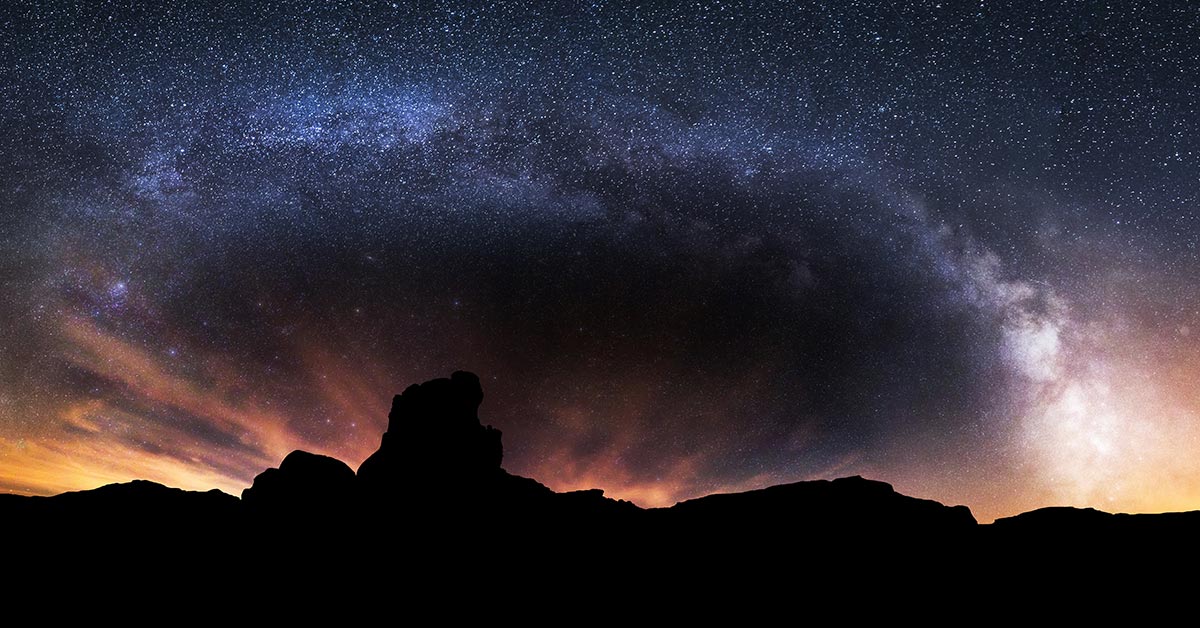
The campground at Devils Garden affords phenomenal views and is the only campground at Arches National Park. You can reserve campsites for nights between March 1 and October 31. During this busy season, the campground is usually full every night. If you're arriving at Arches without a reservation, you'll probably have to look for a campsite outside the park. Between November and February, campsites are first-come, first-served.
Check out the Ranger-led Programs
Programs are offered spring through fall and rangers and volunteers offer a variety of programs every day. Program types, times, and locations vary throughout the year and may change due to weather or other factors. Here's a short list of programs you might consider:
Short Interactive Program (May-September)
These programs are usually 5-15 minutes, are free and all ages are welcome. No advance reservation is needed and times and locations vary, so check at the visitor center.
Guided Walks (June-August)
Walks are usually about 60 minutes and a moderately easy one mile walk (although some are on uneven surfaces). Walks are free, open to all ages, and no advance reservation is required. Bring water, sunscreen, and a hat!
Evening Programs (May-September)
Evening programs run 45-60 minutes and are free and all ages are welcome. Programs are held at the Devils Garden Campground amphitheater. No advance reservations are needed, but check for start times at the visitor center or the campground. Campground evening programs are not conducted during stargazing events.
Fiery Furnace Hikes (May-September)
The only way to enter the Fiery Furnace is with a ranger or with an individual permit. Rangers offer Fiery Furnace hikes spring through fall. Tickets for these hikes are in high demand, and reservations are required. These physically demanding hikes are for ages 5 and up only. You must purchase tickets in advance.
Gaze Up at the Stars
Rangers lead stargazing programs and events at Arches National Park, which has some of the darkest skies remaining in the contiguous 48 United States. The darkness of a moonless night at Arches surprises many visitors. As few as one in ten Americans lives in an area where they can see the estimated 2,500 stars that should be visible under normal conditions. At Arches, the naked eye is sufficient to witness a wealth of stars. Under the right conditions, common binoculars may even reveal the rings of Saturn. Check the calendar at the visitor center to see if there are any special events taking place when you'll be in the park!
A Few Photography Tips
Delicate Arch at sunset might be the most famous image to photograph in the park, but it's certainly not the only one, nor is it necessarily "the best." In this land of wondrous rock shapes, timeless vistas, and piercing contrasts, you are surrounded by compelling subjects for photographs. The best light occurs early in the morning and late in the afternoon, as the lower angle of light gives your subject depth and a greater sense of reality. The warmth of the light deepens the redness of the rock into amazing hues -- the very reason this land is often called "color country."
I've created a poster for Arches National Park that features the iconic Delicate Arch.

Click here to see the Arches National Park poster.
Rob Decker is a photographer and graphic artist with a single passion for our national parks! Rob is on a journey to explore and photograph each of our national parks and to create WPA-style posters to celebrate the amazing landscapes, vibrant culture and rich history that embody America's Best Idea!
Click here to learn more about Rob and the National Park Poster Project
Source:
https://national-park-posters.com/blogs/national-park-posters/best-things-arches-national-park
